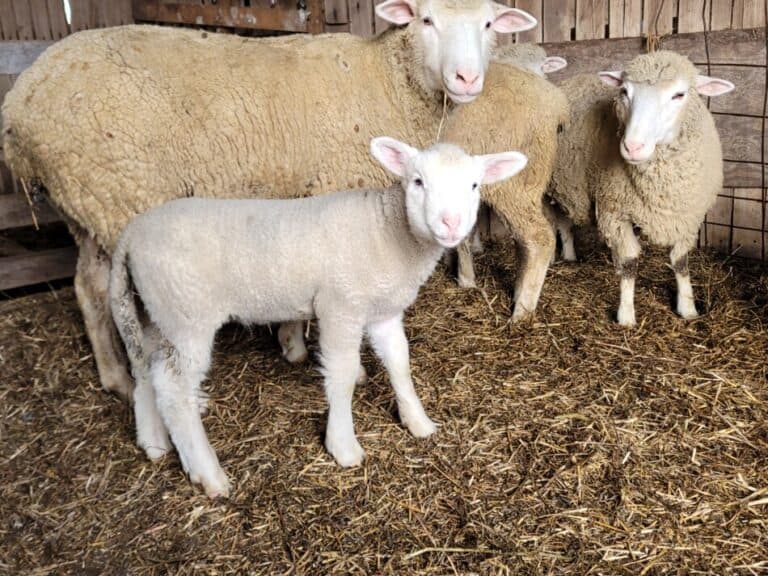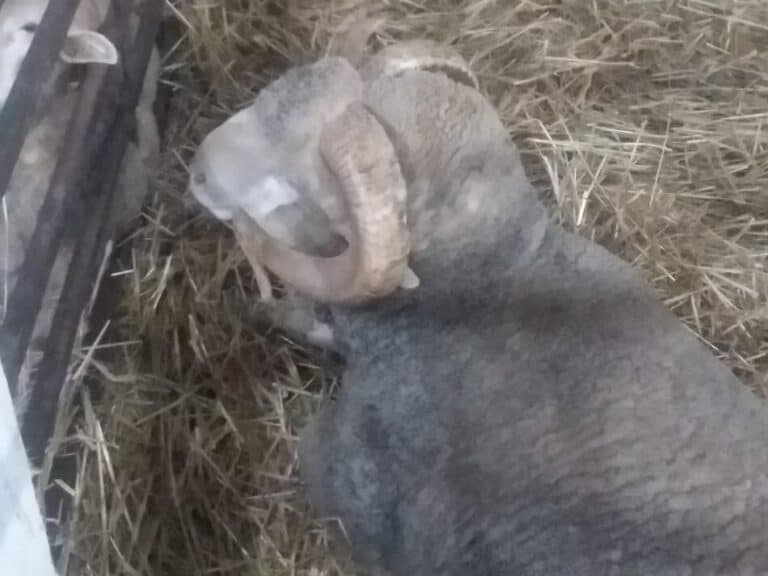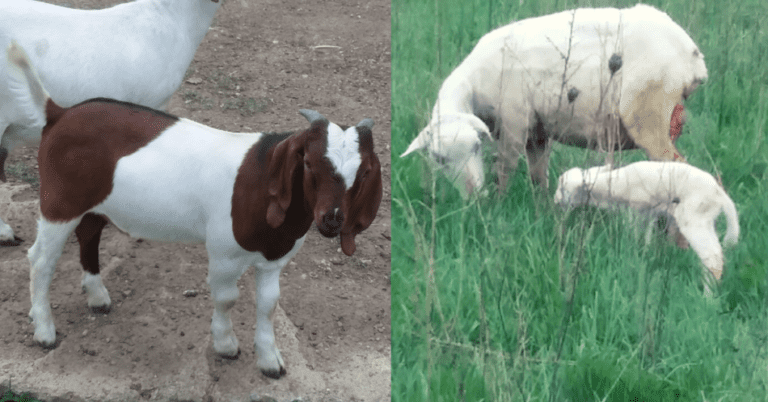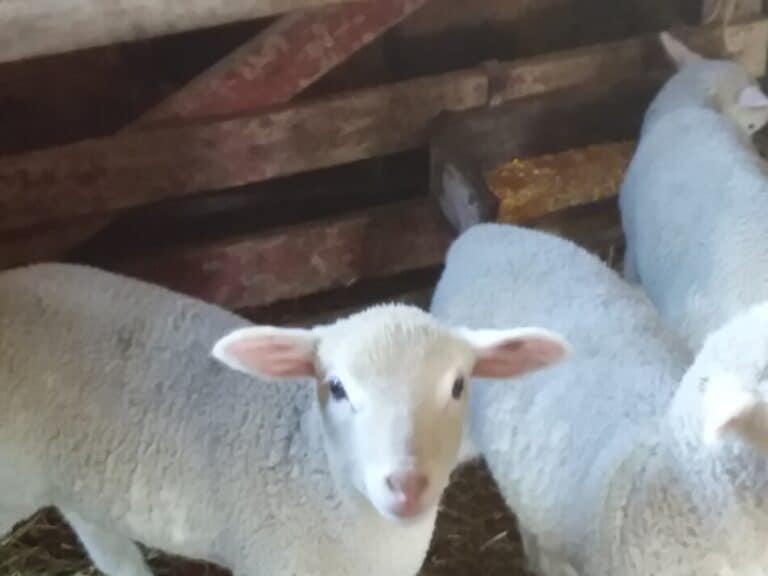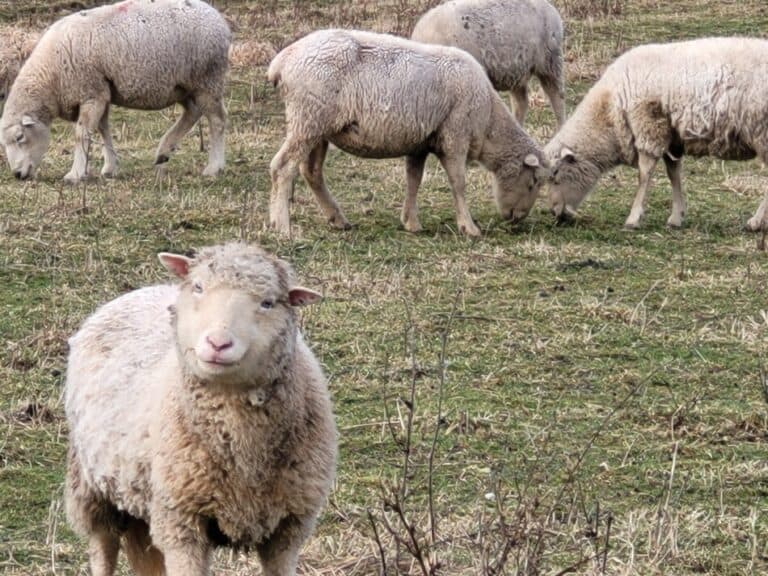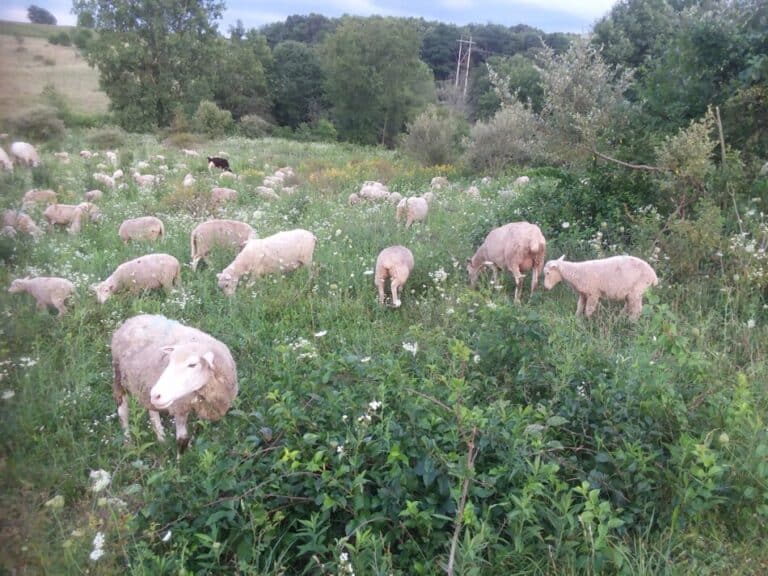Why Don’t Sheep Have Tails?
When you look at most sheep you notice that while they are very similar to other livestock, unlike other domestics, like cattle or goats, they don’t have a tail.
Why is that, especially since some sheep seem to have a short tail and others do not seem to have any tail at all?
Sheep have tails. The tails may be naturally short, hard to see or docked, but all sheep have a tail of some sort.

Most sheep have tails that are short
What may look like a sheep not having a tail is really a sheep that has a very short tail. Some of these tails are docked and some are naturally short, but either way sheep actually do have tails.
Do All Sheep Have Naturally Long Tails? goes more into sheep tails and why you normally see short tails rather than long ones.
If you look at market lambs at the fair, they tend to have a very short tail that is docked close to the backside to give the lamb a clean, well rounded look that makes the rear leg look bigger.
Sheep kept for show would tend to be on the shorter end of docked tails and are fitted (clipped) to show off their best features.
Most farm or ranch sheep would have their tail docked a bit longer to take off the majority of the natural tail length.
Why would a sheep farmer dock tails? Docking tails reduces flystrike.
Long wooly tails tend to gather manure, especially when the grass is watery. Watery grass tends to make more loosely structured manure which sticks to the tail then the poopy tail gets maggots (flystrike).
Can’t the farmers just use medication to prevent flystrike? Yes, in some countries there are a few approved medications for preventing flystrike, here (U.S.) we do not have any at this time.
Since flystrike is such a big problem once it gets started and not all places have approved medications to prevent flystrike, most sheep farmers choose to dock tails rather than risk the flystrike later.
Sheep breeds have different tail lengths
Sheep breeds have different characteristics, one of which can be tail length. There are breeds with naturally short tails, called rat tails, but most wool breeds have long tails that are docked.
Some breeds naturally have short tails
A few sheep breeds have naturally short tails. Some of these short tailed breeds would include Finn and most hair sheep. Wild sheep would also have naturally short tails.
Most wool breeds have naturally long tails
Most of the sheep in the world are wool breed sheep and most wool breed sheep have naturally long tails. For any of these sheep to have short tails what you are really seeing is that they have docked tails.
There are fat tailed sheep
There are also fat tailed sheep, which are sheep that are selectively bred to deposit fat under the tail, kind of like a camel stores fat in her hump.
These sheep are not common in my area, but are highly sought after in areas that prize this fat for cooking.
Trying to breed tailless sheep in the 1960’s
There was some work done in the 1960’s to try to breed tailless sheep, in order to get rid of flystrike.
This breeding experiment did not work due to the lethal genetic link between internal organ health and having a tail.
This is the problem that tailless kittens, like the Manx have, for some reason being bred to not have a tail also ends up with animals that have serious health problems.
Once it became clear that breeding to eliminate the tail was causing the other health problems that were showing up, the program was stopped.
Short tailed Merinos in Australia
There is a breeding effort in Australia to reduce tail length and wool cover under the tail of ewes in order to eliminate the need for tail docking because of flystrike.
Making Short Tail Merinos A Genetic Option shows the work a farm in Australia is doing with breeding for shorter tails by introducing Finn sheep genetics to the Merino flock.
Sheep 101: Tails is a look at the variety of sheep tails in different breeds of sheep with pictures showing each type of tail.
